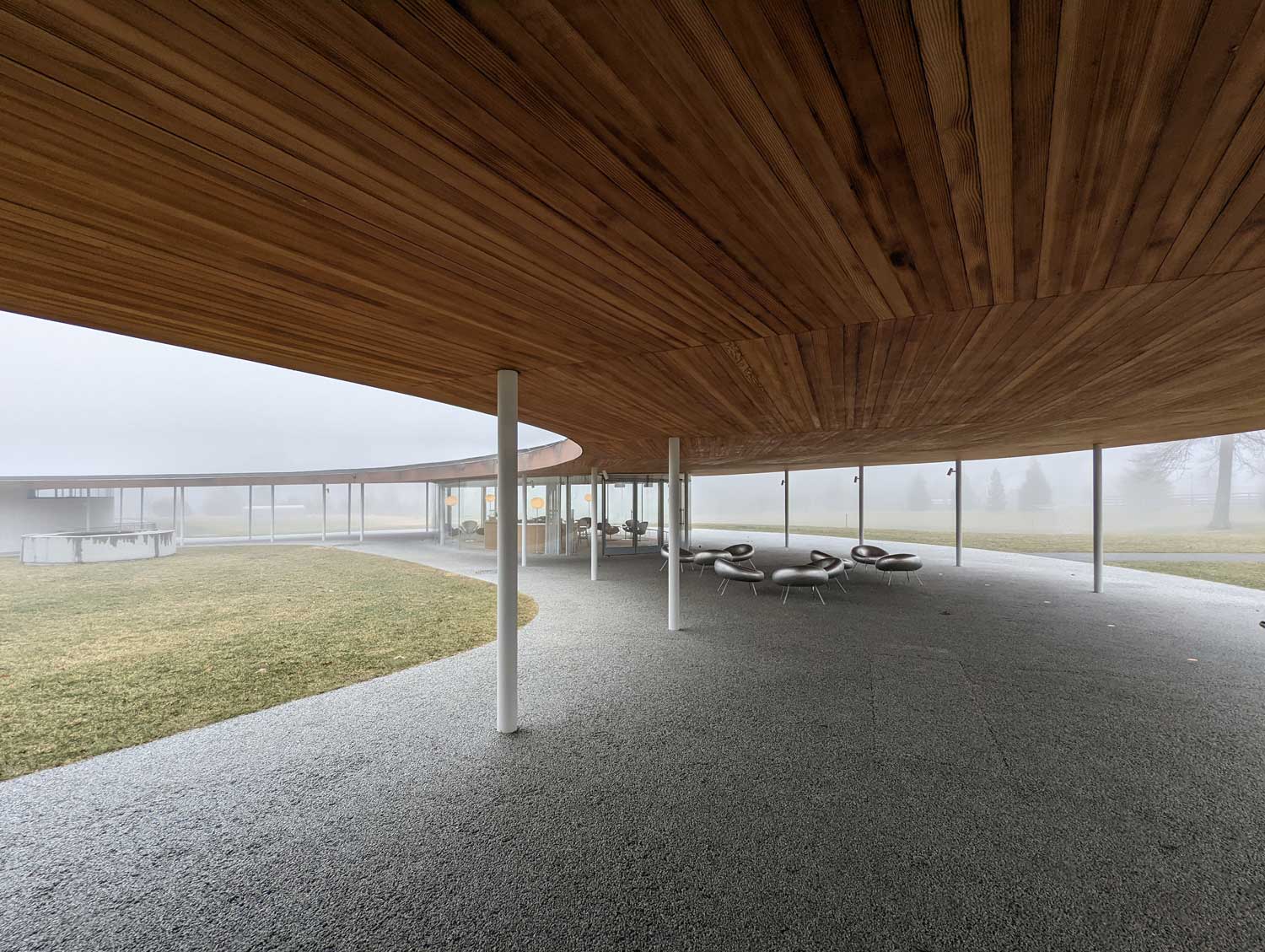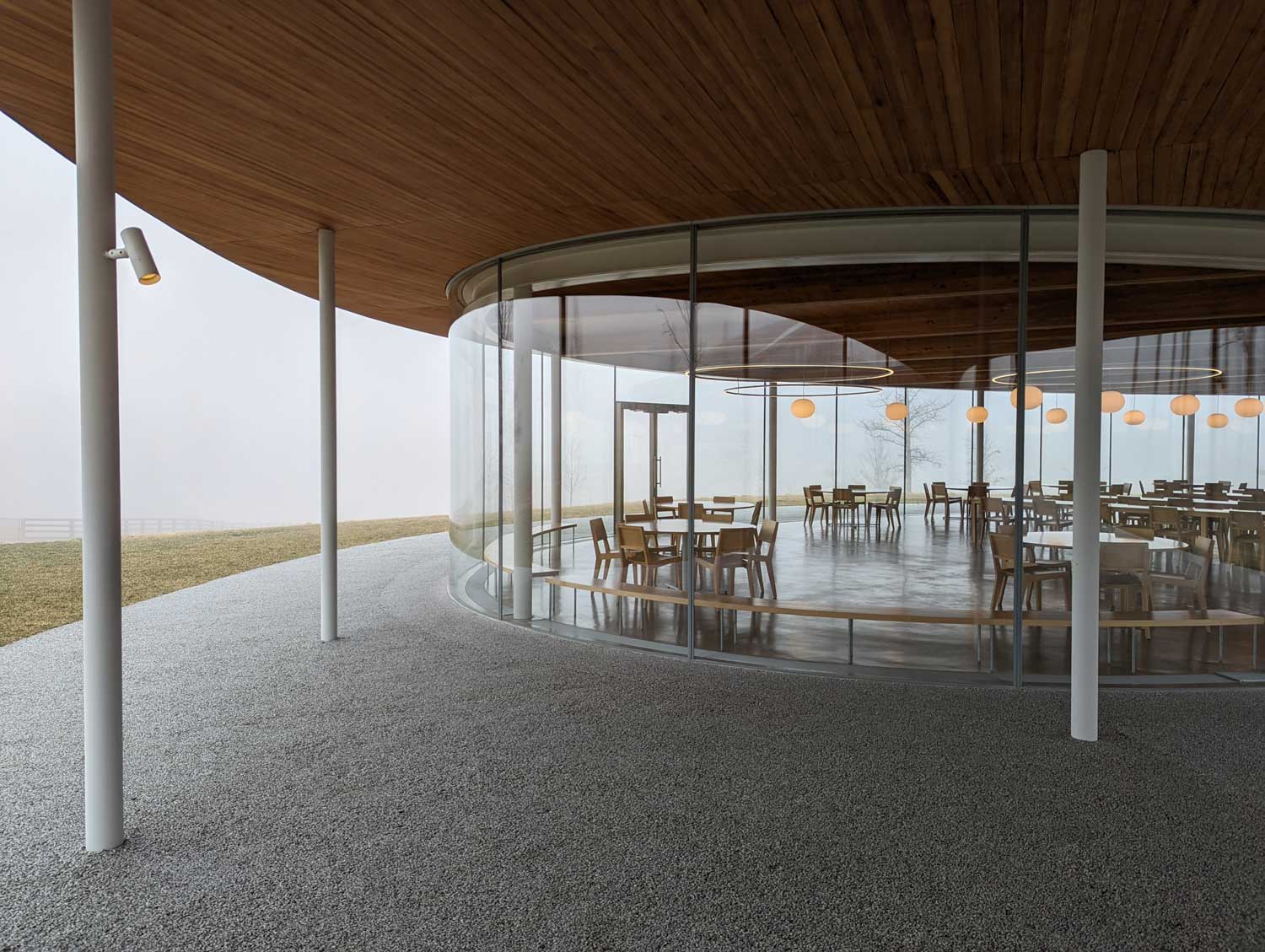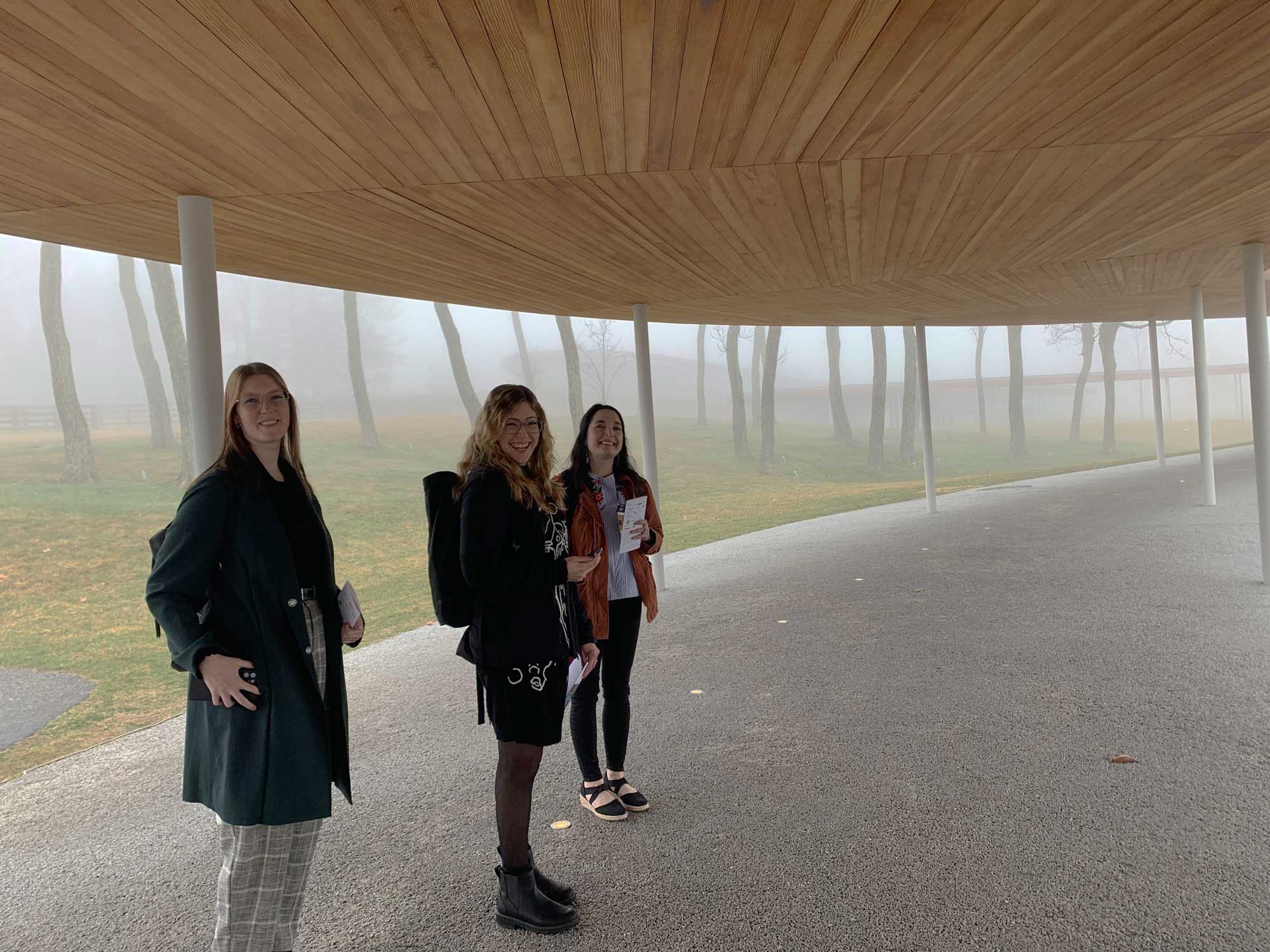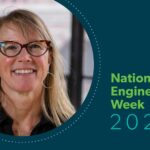Our Journey with Design for Freedom: Understanding Forced Labor and the Supply Chain
In 2021, two Cushing Terrell colleagues were attending the Greenbuild International Conference and signed up for a session titled, “Design for Freedom: Human Rights and Equity in Building Product Supply Chains,” presented by Nora Rizzo, Ethical Materials Director for an organization called Grace Farms Foundation. The session outlined the shocking state of modern slave labor in the building materials supply chain. Learning about the prevalence of forced labor, and about the movement working to combat the issue, Design for Freedom, our team members were deeply affected and came home committed to taking action in their own spheres of influence.
When listening to Nora’s presentation, it was hard not to get emotional. I really had no idea at the time that forced labor was an issue in our industry, so the statistics and stories shocked me to my core. I knew we needed to take this information back to our team and do something about it.
Jill Lee, IIDA, NCIDQ, WELL AP, LFA
Associate | Interior Designer
Cushing Terrell
While many design professionals regularly weigh the environmental impacts of material specifications and whether they contribute to healthy indoor environments, the human impacts related to how those materials are made and who makes them hasn’t been as front and center in our industry. On the heels of Greenbuild, we invited Nora to present to our firm, including to members of our Green Advocacy Council — an internal group focused on advocacy, education, and action in the realm of sustainable design — and our Social Environmental Interior Design group. The presentation was offered as a Continuing Education Unit and our goal was to share this knowledge more widely and build a sub-advocacy team that could help implement awareness and change.
A highlight of 2022 was attending the inaugural Design for Freedom Summit at Grace Farms in New Canaan, Connecticut. I joined Cushing Terrell team members Elna Albano, Jill Lee, and Kaitlin McCoy for the trip, bringing both interior design and architecture perspectives. We arrived at Grace Farms, a humanitarian center operated by the Grace Farms Foundation, ready to meet with other changemakers. The beautiful campus was a joy to explore and served as a perfect backdrop for the summit. Grace Farms’ centerpiece is the River building, designed by Tokyo-based architecture firm SANAA, which blends into the landscape and offer visitors a unique way to “experience nature, encounter the arts, pursue justice, foster community, and explore faith.”
Looking back, I’m struck by the transparent nature of the River building and how it calls on us to be aware of the impacts of the decisions we make in our professional lives.
The summit consisted of a series of panel sessions hosted by architects, supply chain experts, representatives from government agencies, attorneys, and advocates. Topics included, “How Government Policy and Enforcement Impact Forced Labor in Supply Chains,” “Corporate Ethical Responsibility Within the Material Supply Chain,” and an introduction to DFF pilot projects, to name a few. We also participated in breakout sessions, a tour of the grounds, and had the opportunity to network with the panelists and attendees.
We came away from the conference feeling inspired and ready to continue the conversation around modern slavery in the construction industry.
How We’re Taking Action in Our Practice
The use of forced labor in the built environment is pervasive yet largely unknown.
As designers, we have immense power in our specifications. Manufacturers listen to the design community when we ask for new designs, patterns, or colorways, as well as carbon footprint disclosure in manufacturing and transparency in material ingredients. It should be no different with social justice concerns, including understanding if products are ethically sourced and produced without forced or child labor.
Our clients also hold a lot of power in the kind of projects they want to build. As the leaders at Design For Freedom say: “Once you know, you can’t unknow it.” By having the conversation with our clients, they too can demand that products adhere to standards of ethical responsibility. As we bring awareness of modern slavery in the building industry to our clients, we hope to create a larger community of people asking the question: “Will my building/project be ethically sourced?” The more clients who are asking, the more likely and faster change will happen.
I love to see the A&D community putting pressure on manufacturers — you have so much leverage in your specs!
Kristin Lundin
Materials Consultant
3form
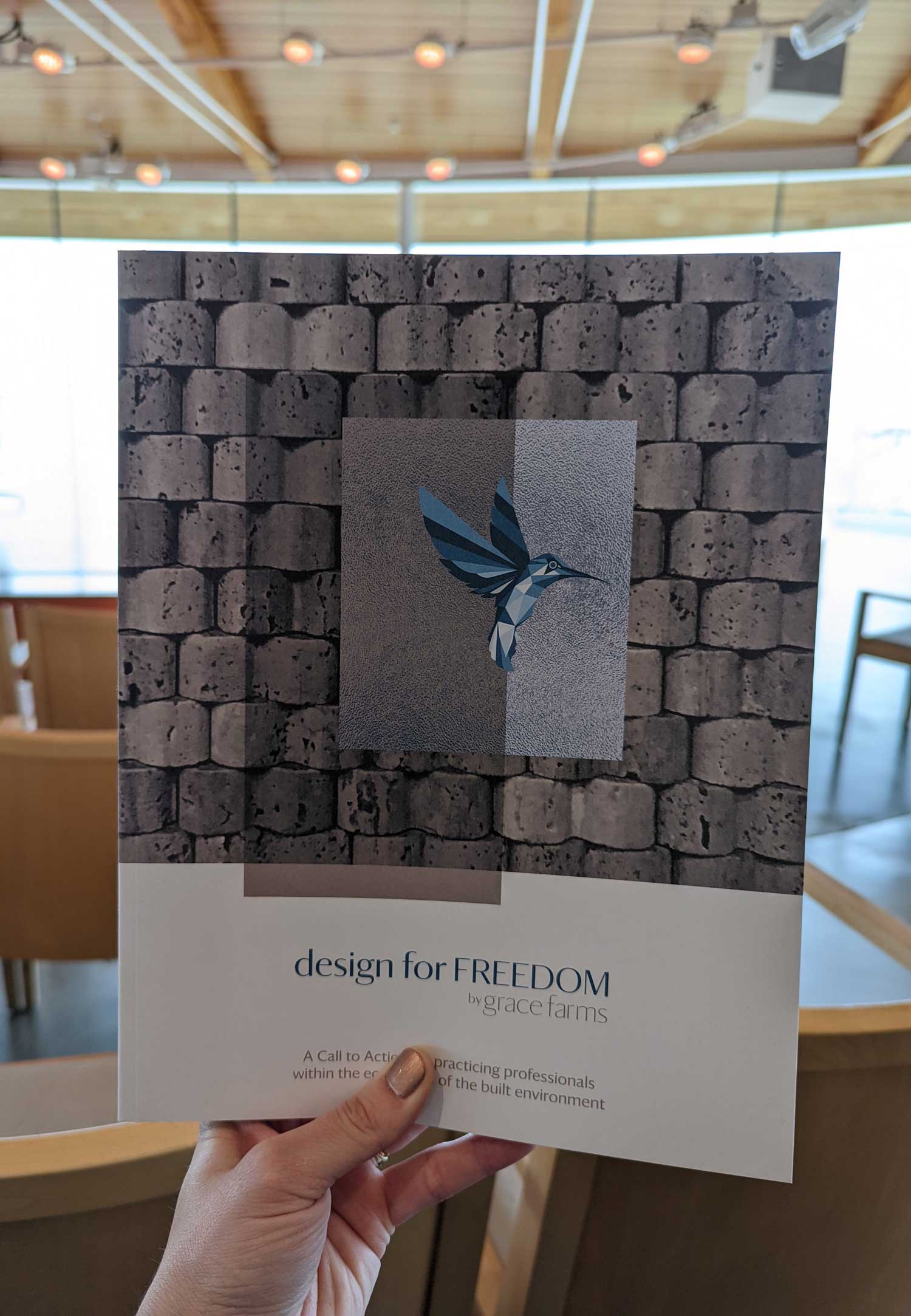
After the inaugural summit in 2022, the Design for Freedom Toolkit was released to support the A/E community in making change through our projects. The toolkit provides guidance for incorporating material transparency and ethical selection and procurement for any project type. With this toolkit as a guide, we set a couple goals for ourselves.
First half of 2023:
We’re currently researching a couple materials per project to test the process of tracing products through the supply chain. We want to do this research on a handful of products before diving into a pilot project. Essentially, we’re working to understand for ourselves how easy or difficult it can be to trace a product’s origin, then use that knowledge to create transparency and guidance around eliminating forced labor in our specification choices firm-wide. This is a marathon, not a sprint, and we’re actively putting steps in place to build a foundation of knowledge and a resulting process.
Second half of 2023:
Next, we plan to identify and begin working on a project that will be a good candidate for a DFF pilot, leveraging our team’s multidisciplinary expertise.
As momentum accelerates and understanding grows, we believe clients will begin asking us for this transparency and assurance in our specifications, and we need to be ready with solutions. We want to be at the forefront of this movement with clients committed to being leaders in their ability to affect change in the world through their projects. We’re excited to see research and education turn into decisions that make a difference.
Social justice goes hand in hand with environmental justice — we cannot have a more sustainable future without thinking about those who are involved in the process of building a viable future for everyone. For my design practice, it feels natural to consider humans AND our global environment holistically.
Elna Albano, IIDA
Interior Designer
Cushing Terrell
Working with Manufacturing Partners
In addition to working with clients, we launched an education campaign aimed at asking manufacturing and product reps to be our partners in the goals of supply chain transparency and the elimination of forced labor. During the month of January, our Cushing Terrell Interior Design group collectively reached out to more 100 reps with 200+ manufacturers represented across the country.
The goal was to spread knowledge to the manufacturers we work with and for them to spread the word within their companies. We asked manufacturer reps to take the following steps:
- Share a letter and its message internally at their company to provide context for requests.
- Learn more about forced labor issues within the building materials supply chain.
- Review the Design for Freedom supplemental documents.
We had great success with the outreach program and received many positive responses from manufacturers who are already thinking about this topic and mission. It was heartening to learn that many of those we partner with are already working with Grace Farms/Design for Freedom or are Cradle to Cradle certified (which has requirements for ethical supply chains built in).
We’re also laying the groundwork with our architectural service sector for a similar manufacturer outreach initiative. We’ll be coordinating with Kaitlin McCoy, who attended the Design for Freedom summit with us last year and who was one of our team members at that initial Greenbuild session in 2021, to further the education and research process and begin to tackle “big ticket” items in the building industry such as steel, wood, brick, and concrete.
Almost all modern construction projects around the world are subsidized with slavery, due to unchecked forced labor that permeates thousands of raw and composite materials sourced locally to globally. Once you know, you cannot unknow it.
Design for Freedom
Full Report
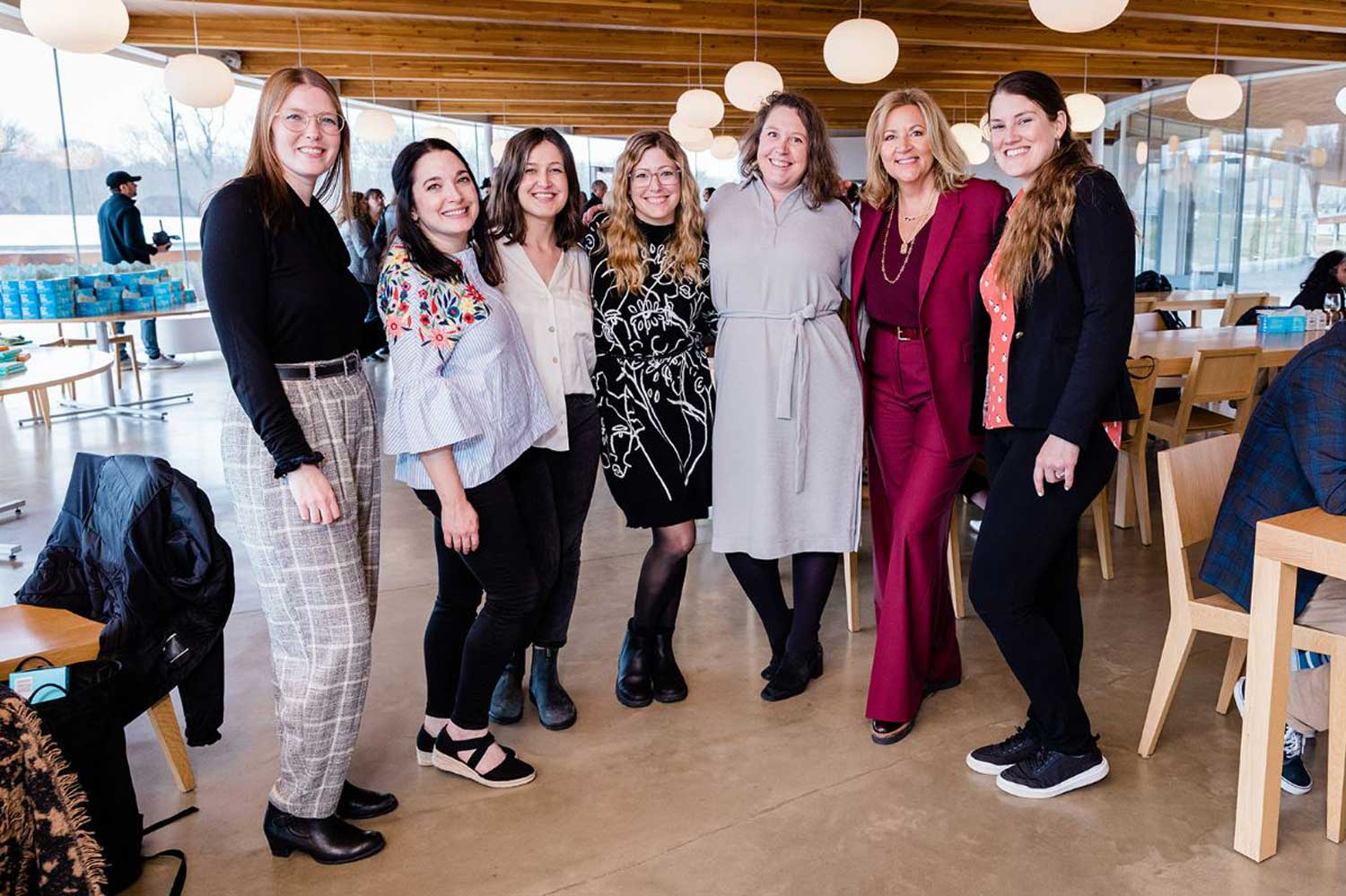
Pictured from left to right at the inaugural DFF summit are: Design Professional Kaitlin McCoy (Cushing Terrell), Interior Designer Jill Lee (Cushing Terrell), Interior Designer Elna Albano (Cushing Terrell), Interior Designer Jessica Earp (Cushing Terrell), Sustainable Building Advisor Candon Murphy (Perkins+Will), Grace Farms Foundation CEO Sharon Prince, and Laurel Christensen, Director of Outreach and Engagement for Mindful Materials.
While at the inaugural Design for Freedom Summit, we were a bit star struck to have a photo opportunity with Sharon Prince, CEO and Founder of Grace Farms Foundation. She formed the Design for Freedom Working Group in 2017, which now includes more than 100 leaders and experts, and she has made addressing exploitation in the building materials supply chain a driving force in her work.
It’s encouraging to know, that through the decisions we make, and those we help our clients make as their trusted advisors in the design process, that we too can make a difference.
What’s Up Next?
We hope to see you at the 2023 Design for Freedom Summit on March 30!

